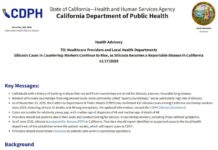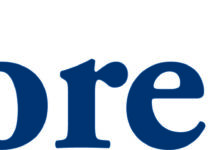ALBANY, N.Y., Nov. 3, 2025 /PRNewswire-HISPANIC PR WIRE/– An estimated 860,000 New York residents face a substantial risk of financial insecurity, according to a report prepared by the Center for Social and Demographic Research on Aging, part of the Gerontology Institute at the University of Massachusetts Boston. The report was underwritten by the New York State Senior Action Council (NYSSAC) and funded by the New York Community Trust.
The Report, entitled, Late-life Financial Security in New York: Evidence from the 2024 Elder Index reveals sharp disparities in economic security across gender, ethnicity, marital status, and geography, underscoring the difficult realities many seniors face.
“As longevity increases and the 65+ population continues to grow, we must ensure that programs and benefits are not only available but also accessible and appropriate for our aging population,” commented Maria Alvarez, Executive Director of the NYSSAC. She added, “Since 2009, StateWide has championed the NYS Elder Economic Security Index as a vital tool to highlight the financial realities facing older New Yorkers.”
The Elder Index
https://elderindex.org/definition is produced and disseminated annually by the Gerontology Institute at the University of Massachusetts Boston. Since 2015 Elder Index values have been produced for every county and state in the nation.
The Elder Index is designed as a threshold for adequacy specifically for older adults living independently. In contrast, the federal poverty level (FPL), defined by the U.S. Department of Health and Human Services, is used to assess poverty and determine eligibility for many means-tested benefit programs. Although the FPL is adjusted based on the number of people living in a household, it does not take into account differences in cost of living across communities and states.
Summing all the cost categories yields an Elder Index value ranging from $30,936 annually for an older individual in good health, living alone in a home they own without a mortgage, to $62,688 annually for an older couple in good health, living in a home owned with a mortgage. The Elder Index does not include estimated costs for long-term services and supports (LTSS). Although many older adults require assistance due to medical conditions or disability, the vast majority of people needing LTSS rely on unpaid care from family and friends
Key New York Findings Include
- New York ranks as the fourth most expensive state for older adults.
- Costs are especially high in New York City, Long Island and the mid-Hudson region
- 59% of women living alone have incomes below the Elder Index, 49% of men and 26% of older couples have incomes below the Index
- Groups facing elevated risk of falling below the Index include same-sex couples, people of color, people with disabilities and the eldest of old women
- Average Social Security benefits only cover 61% of the Elder Index in New York, leaving approximately $14,804 to be covered by other sources annually.
- 573,000 New Yorkers 65 and older find it very or somewhat difficult to pay for ordinary household expenses
- 229,000 elderly New Yorkers are falling behind on rent or mortgage expenses
- Over 800,000 of New York’s elderly report food insecurity
- Approximately 652,000 over 65 report high anxiety due to price increases
Financial struggles such as these have numerous negative consequences, including compromised nutrition, reduced medication adherence, worsened chronic health conditions, and increased risk of early mortality
Living in the “GAP”
Singles and couples having incomes above the Elder Index are classified as financially secure. The middle segment includes people with incomes between the FPL and the Elder Index, identified as being “in the gap.”
Incomes among individuals in the gap fall short of what is required to live independently. Yet these individuals and families are often ineligible for many programs and benefits that could be helpful in meeting their basic needs. This group of people are struggling yet not captured in many assessments of financial security in retirement.
Filling in the Blanks
For those with incomes below the Elder Index, public programs are critical in supporting an adequate lifestyle. Supplemental Security Income, Cash Assistance, Supplemental Nutrition Assistance (SNAP), Home Energy Assistance (HEAP), Medicaid, and the Medicare Savings Program (MSP) are among the essential components of the public safety net for older adults.
“With the older population projected to increase substantially in the coming decades, New York must prepare to address rising demand for supports and develop strategies to promote financial security later in life,” commented Alvarez.
Call to Action
“With looming or actual Federal and State cuts to these vital programs, we fear that even more of New York seniors will be falling behind in maintaining an adequate standard of living,” Alvarez stated.
“We call upon the State and Federal governments to increase funding for our seniors so they can live out their lives in well-deserved comfort and security,” she concluded.
The full text of the Late-life Financial Security in New York: Evidence from the 2024 Elder Index along with specific data from each of New York’s regions can be found at Elder Economic Security Index | StateWide.
SOURCE New York StateWide Senior Action Council, Inc.






